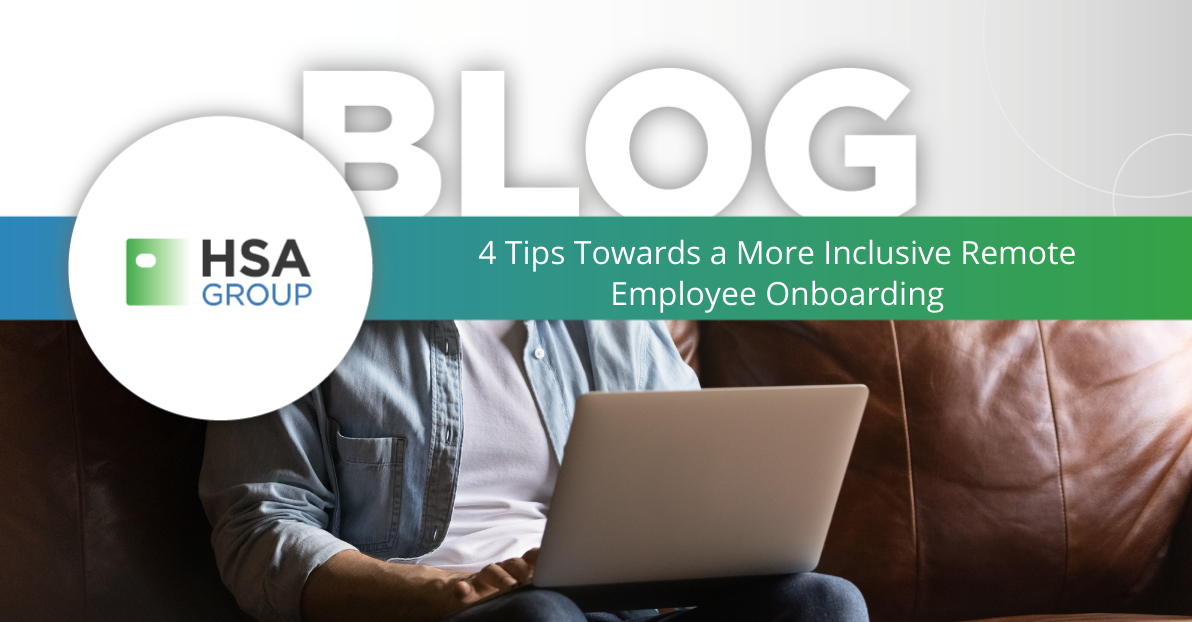Have you ever been a remote employee? The increase of remote employees across the globe has grown significantly since the start of the pandemic. This work trend is increasing by the day and could be a key to employee retention.
Starting a new job comes with a mix of emotions from optimism to apprehension and general nervousness. First impressions are everything. Those crucial moments come in onboarding new hires, which is now entirely remote for many organizations.
Remote employees have gone from being the exception to becoming a major part of the workforce. In fact, 59% of respondents to an Owl Labs survey said they would be more likely to choose an employer who offered remote work compared to those who didn’t.
If your company has made diversity, equity, and inclusion (DEI) a priority moving forward, it is also a natural place to start to your onboarding process. So how do you make your remote employee onboarding process feel more inclusive? Follow the below steps towards a stronger onboarding process which will lead to better retention.
1. Prepare your remote employee with an inclusive experience before their first day
Asking remote employees, ‘What do you need from us to assist you to do your job?’ is a wonderful way to ensure every new hire is prepared for day one. Some of the most challenging barriers to creating inclusive environments are those we cannot see-through Zoom. Taking time to help a new hire set up live captions ahead of the first onboarding session, ensuring delivery of a headset or desk setups, or planning break schedules to accommodate religious practices or childcare, all go into making an inclusive environment.
2. Ask for their preferred name and pronouns and then use them
Preferred names and pronouns are one the easiest and, admittedly, one of the hardest ways to promote equity, belonging, and inclusion across the organization. This approach can be unintentionally marginalizing, especially when an individual is singled out to ask for their preferred name or pronouns. Start your new employee relationship with a sense of belonging by sharing how you structure your emails, virtual meeting platforms, badges, and other forms of identification.
Do not assume how someone wants to be represented. Make a conscious effort to demonstrate neutral language during remote employee onboarding when referring to team and families to ensure all team members feel acknowledged, safe, and included.
3. Help them speak your language
Every organization has its unique company language – acronyms, specific terms, formal norms, and events. As a new hire, you are unaware of these situations until you come across one, so helping expose employees to your language and norms and preparing them for their first six months navigating the organization helps to break down unintentional silos. It’s essential to help all new hires feel like they’re speaking the same language and have the exact expectations as their peers, and for it to feel safe to ask questions to learn concepts thoroughly.
4. Have a diverse group greet your new hires and help them build relationships
Loneliness and isolation are the most significant reported concerns among remote employees. New hires are isolated in their homes, connected by screens and Zoom meetings, without the day-to-day social interactions of office life. Without regular face-to-face interactions, these workers struggle to figure out company culture and where they fit in, making them feel invisible and anxious about doing what they were hired to do. A robust wellbeing program – and flexible benefits plan that includes access to mental health resources – that offers connection points can help all employees feel like they belong and give them tools to support their own needs. Starting onboarding with a diverse group of individuals, not just departments begin a crucial step in delivering a message to new hires.
Remote Onboarding Checklist
Organizations typically start onboarding by creating clear pathways to help employees connect quickly to employee resources. This promotes a place of belonging both in acceptance and in job tasks. Leveraging an inclusive wellbeing program during onboarding and beyond helps remote employees feel cared for, safe and connected to your organization. Below is an abridged checklist for inclusive remote employee onboarding:
- Integrate wellbeing into day one. Add a wellbeing onboarding session, showing the depth and breadth of your commitment to physical, mental, social and community wellbeing.
- Keep a calendar of events. Each organization has its own internal events calendar, bring these connection points forward during your onboarding.
- Show employees a social health commitment. Help employees bring their friends and family into your wellbeing program, instantly boosting feelings of inclusion and support.
- Talk about healthy habits. Health can feel taboo in the workplace, and remote working makes this even more difficult to discuss. Show employees how they can use your wellbeing program to form small healthy habits from smoking cessation to stress reduction.
- Help employees connect with their peers. Leverage connection points in your wellbeing program for immediate belonging.
- Start a new hire challenge. Demonstrate your commitment to health with a physical or healthy habit challenge new hires and their peers.
- Explain how to access benefits. Go beyond the insurance paperwork by showing employees how to access your total rewards including mental health, family planning, coaching, nutrition, and more.
Your Health and Wellness Insights
When remote employees feel appreciated and are actively achieving their personal goals, morale, productivity, and motivation rise. Jobseekers look for that in future employers. Pair inclusiveness and job happiness with the flexibility to change or adjust their wellness goals. A healthy, happy onboarding is the foundation of a healthy, successful retention.
Does your remote employee onboarding promote inclusiveness? Does your employee benefits plan include the flexibility to attract and retain top talent? Not sure? Contact the team at HSA Easy Pay Ltd. for a free consultation. We can also provide a demo of how our no-out-of-pocket solution can ease stress for everyone on your team!
Healthcare is stressful enough. Paying for it shouldn’t be.




